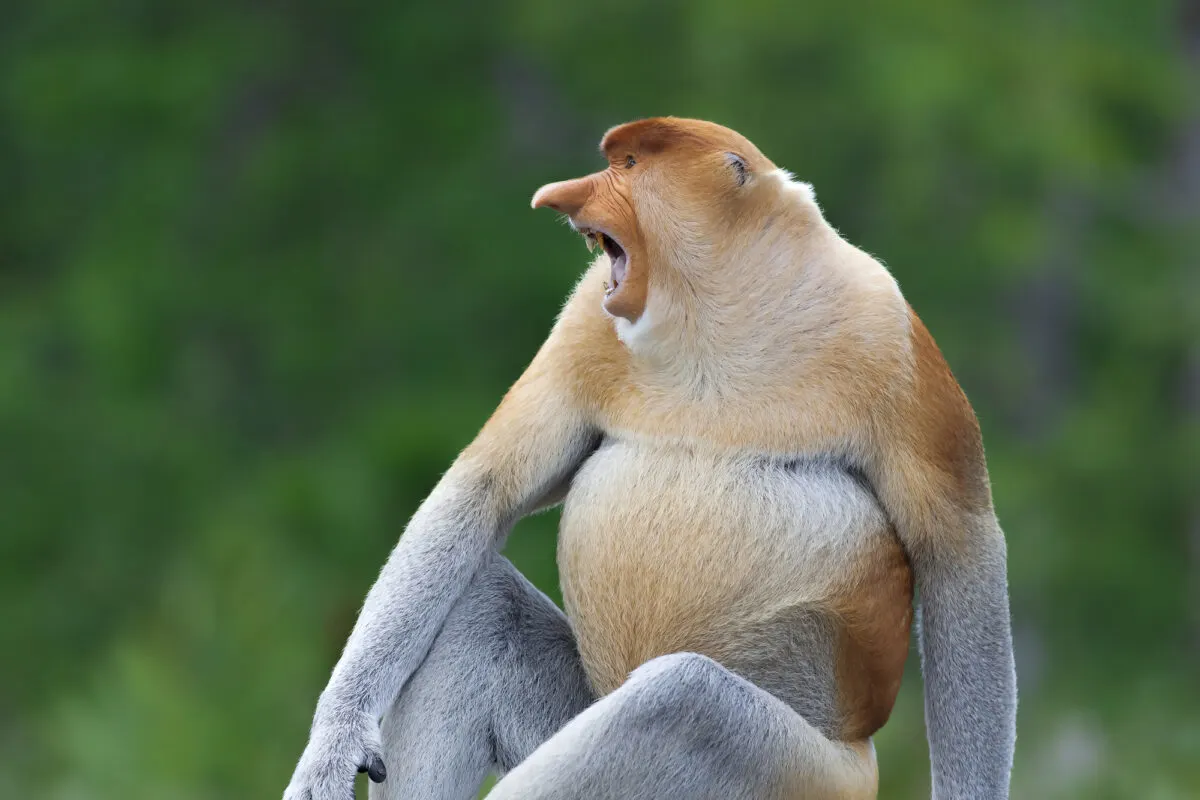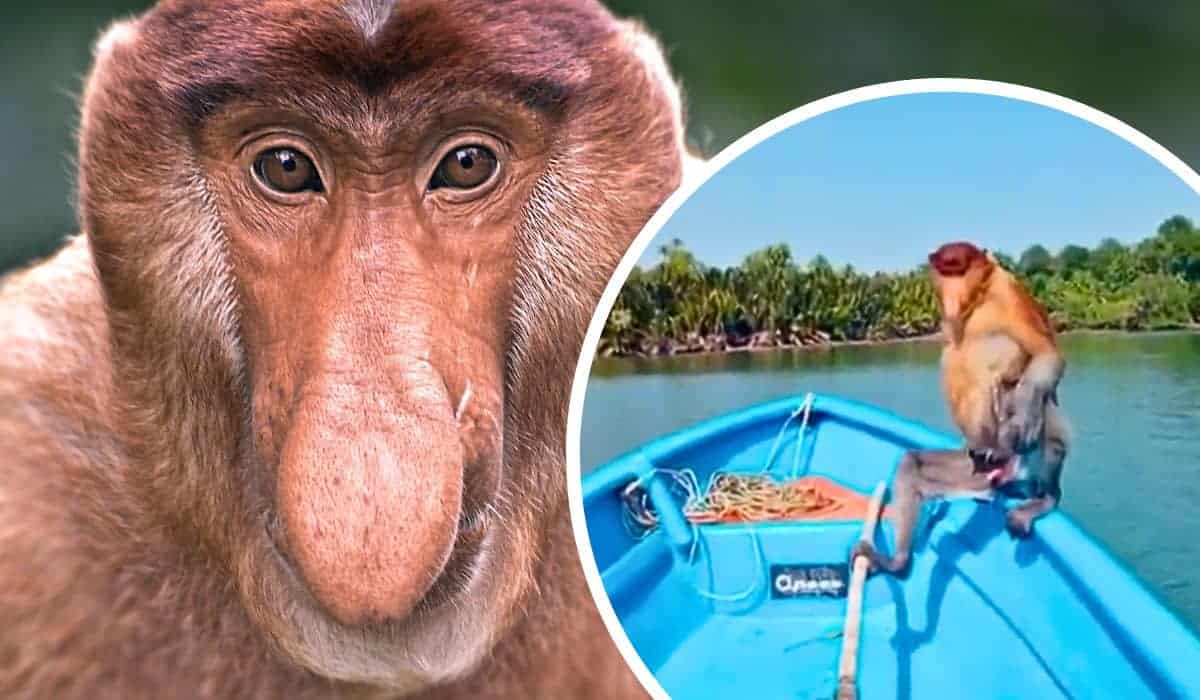When it comes to the animal kingdom, beauty is often subjective and diverse. However, there’s an undeniable fascination surrounding the "ugliest monkey in the world." This creature, despite its unconventional appearance, plays a vital role in nature's intricate balance. While its features might not align with traditional standards of beauty, the story of this monkey is one of survival, adaptation, and ecological importance.
The term "ugliest monkey" might evoke curiosity or even intrigue. But beyond its appearance lies a deeper narrative about biodiversity, conservation, and the unique traits that make this primate extraordinary. In this article, we will delve into the world of this fascinating creature, exploring its characteristics, habitat, and the reasons why it deserves our attention and admiration.
Join us as we uncover the truth behind this often-misunderstood animal and learn how its unconventional beauty contributes to the rich tapestry of life on Earth. By the end of this article, you’ll gain a newfound appreciation for this remarkable monkey and its place in the natural world.
Read also:Angie Dickinson A Timeless Icon In Hollywood
Table of Contents:
- Introduction
- Biological Overview
- Habitat and Distribution
- Physical Characteristics
- Diet and Nutrition
- Behavioral Traits
- Conservation Status
- Threats and Challenges
- Interesting Facts
- Conclusion
Biological Overview
The "ugliest monkey in the world" is commonly referred to as the Rondo dwarf galago (Galago rondoensis) or the proboscis monkey (Nasalis larvatus), depending on the context. These primates are native to specific regions of the world and possess distinct features that set them apart from other species. While the proboscis monkey is known for its large nose and potbelly, the Rondo dwarf galago is notable for its small size and unique vocalizations.
Both species belong to the primate family and play essential roles in their respective ecosystems. Their biological makeup, including their genetic diversity and evolutionary adaptations, makes them fascinating subjects of study for scientists and conservationists alike.
Classification and Taxonomy
The classification of these monkeys is rooted in their evolutionary history. The proboscis monkey, for example, is part of the Cercopithecidae family, which includes Old World monkeys. On the other hand, the Rondo dwarf galago belongs to the Galagidae family, which encompasses bushbabies and galagos.
Understanding their taxonomy helps researchers identify their relationships with other species and track changes in their populations over time. This information is crucial for developing effective conservation strategies.
Habitat and Distribution
The proboscis monkey and Rondo dwarf galago inhabit vastly different environments, each tailored to their unique needs. The proboscis monkey is primarily found in the mangrove forests and swampy areas of Borneo, while the Rondo dwarf galago resides in the lowland forests of Tanzania.
Read also:Clairo Height In Cm Discover The True Measure Of Pop Sensation
Both species rely heavily on their habitats for food, shelter, and protection from predators. However, habitat loss due to deforestation and human activities poses a significant threat to their survival.
Environmental Adaptations
Each species has developed specific adaptations to thrive in its environment. For instance, the proboscis monkey's large nose helps amplify its calls, allowing it to communicate effectively over long distances. Similarly, the Rondo dwarf galago's nocturnal behavior enables it to avoid predators and conserve energy during the day.
These adaptations highlight the resilience and ingenuity of nature in shaping the characteristics of living organisms.
Physical Characteristics
The physical appearance of the "ugliest monkey" is a topic of much discussion. While some may find their features unappealing, others recognize the functional purposes behind them. For example, the proboscis monkey's oversized nose serves both social and biological functions, enhancing its ability to attract mates and assert dominance.
The Rondo dwarf galago, on the other hand, is known for its diminutive size and large eyes, which aid in its nocturnal lifestyle. These physical traits contribute to their survival and success in their respective habitats.
Unique Features
- Large nose for vocalization and mate attraction (proboscis monkey)
- Compact body for agility and climbing (Rondo dwarf galago)
- Specialized digestive system for processing fibrous diets
These features are not merely aesthetic but serve vital functions that enable these monkeys to thrive in their environments.
Diet and Nutrition
The diet of the "ugliest monkey" varies depending on the species. The proboscis monkey primarily consumes leaves, fruits, and seeds, while the Rondo dwarf galago feeds on insects, tree sap, and gum. Both species have evolved specialized digestive systems to efficiently process their food sources.
Understanding their dietary needs is essential for conservation efforts, as it helps ensure that their habitats provide adequate resources for their survival.
Nutritional Adaptations
Each species has developed unique nutritional strategies to cope with the challenges of their environments. For instance, the proboscis monkey's stomach is divided into compartments, allowing it to break down tough plant material more effectively. Similarly, the Rondo dwarf galago's ability to extract nutrients from tree sap and gum provides it with a reliable food source during lean times.
These adaptations demonstrate the complexity and efficiency of nature's designs.
Behavioral Traits
The behavior of the "ugliest monkey" is as fascinating as its physical characteristics. Both the proboscis monkey and Rondo dwarf galago exhibit complex social structures and communication methods. For example, proboscis monkeys live in groups led by a dominant male, while Rondo dwarf galagos communicate through a variety of vocalizations and physical gestures.
Studying their behavior provides valuable insights into their social dynamics and survival strategies.
Social Structures
- Proboscis monkey groups are led by a dominant male, with females and offspring forming the core of the group.
- Rondo dwarf galagos form small family units, with individuals often grooming each other to strengthen social bonds.
These social structures play a critical role in the monkeys' ability to survive and reproduce in their challenging environments.
Conservation Status
Both the proboscis monkey and Rondo dwarf galago are classified as endangered species by the International Union for Conservation of Nature (IUCN). Habitat destruction, illegal hunting, and climate change are among the primary threats to their survival.
Conservation efforts are underway to protect these monkeys and their habitats. These initiatives include establishing protected areas, promoting sustainable land use practices, and raising awareness about the importance of biodiversity.
Current Conservation Initiatives
- Establishment of wildlife reserves in Borneo and Tanzania
- Community-based conservation programs to involve local populations
- Research projects to monitor population trends and habitat conditions
These efforts are crucial for ensuring the long-term survival of these remarkable creatures.
Threats and Challenges
Despite conservation efforts, the "ugliest monkey" faces numerous threats that jeopardize its existence. Deforestation, driven by agriculture and logging, continues to shrink their habitats. Additionally, climate change alters the availability of food and water, further complicating their survival.
Addressing these challenges requires a coordinated effort from governments, organizations, and individuals to implement sustainable practices and protect vulnerable ecosystems.
Potential Solutions
- Advocating for stricter regulations on deforestation and land use
- Supporting reforestation projects to restore degraded habitats
- Encouraging eco-tourism to generate income for local communities while promoting conservation
By taking these steps, we can help safeguard the future of these incredible animals.
Interesting Facts
Here are some intriguing facts about the "ugliest monkey in the world":
- The proboscis monkey's nose can grow up to 4 inches long in males, making it one of the most distinctive features in the animal kingdom.
- Rondo dwarf galagos are among the smallest primates, with adults weighing less than 100 grams.
- Both species have been featured in documentaries and scientific studies, highlighting their importance in the global biodiversity narrative.
These facts underscore the uniqueness and significance of these monkeys in the natural world.
Conclusion
In conclusion, the "ugliest monkey in the world" is far more than its appearance suggests. Through its remarkable adaptations, social behaviors, and ecological contributions, this primate exemplifies nature's unconventional beauty. By understanding and appreciating these creatures, we can better protect them and their habitats for future generations.
We invite you to share your thoughts and insights in the comments section below. Additionally, consider exploring other articles on our site to learn more about the fascinating world of wildlife and conservation. Together, we can make a difference in preserving the beauty and diversity of life on Earth.


